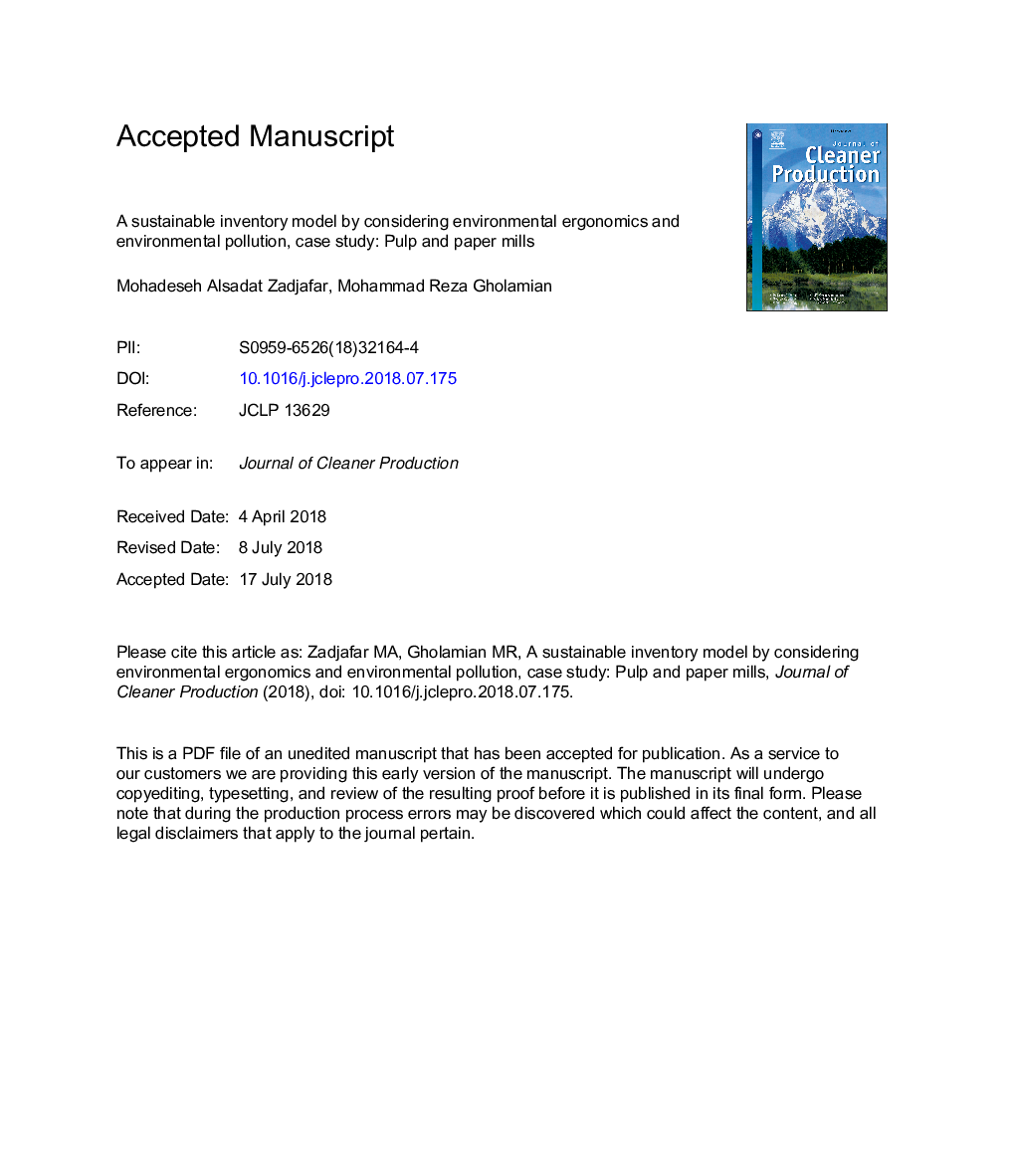| Article ID | Journal | Published Year | Pages | File Type |
|---|---|---|---|---|
| 8093202 | Journal of Cleaner Production | 2018 | 26 Pages |
Abstract
In this study, a mathematical model has been developed for sustainable inventory, in which the effects of environmental factors on social factors, have been investigated. To this end, first, we revised Economic Order Quantity (EOQ) model by adding income from waste sales to this model. Next, considering the emission of sulfur oxides (SOx), nitrogen oxides (NOx) gases, Biochemical Oxygen Demand (BOD) and chemical oxygen demand (COD) indicators in waste water as a measure of water organic pollutants, we proposed a Green Economic Order Quantity (GEOQ) model. Then in order to examine interdependency between environmental aspects and social aspects, we introduced the sustainable model by adding environmental ergonomics in the terms of the effect of SO2 emission on human health. Since the structure of the model consists of nonlinear objective function and linear constraints, the model could be solved based on an exact nonlinear constrained solution method. Finally, we examined the effectiveness of the proposed model demonstrated in a real case study of pulp and paper mill. Validation of the model was done by comparing the cost function of the proposed model with the pure economic model and the actual data. The results of study showed that proposed sustainable model plays a significant role in determining the order quantity and reduction of cost function, sulfur oxides (SOx) and nitrogen oxides (NOx) emissions, and Biochemical Oxygen Demand (BOD) and chemical oxygen demand (COD) in waste water.
Related Topics
Physical Sciences and Engineering
Energy
Renewable Energy, Sustainability and the Environment
Authors
Mohadeseh Alsadat Zadjafar, Mohammad Reza Gholamian,
